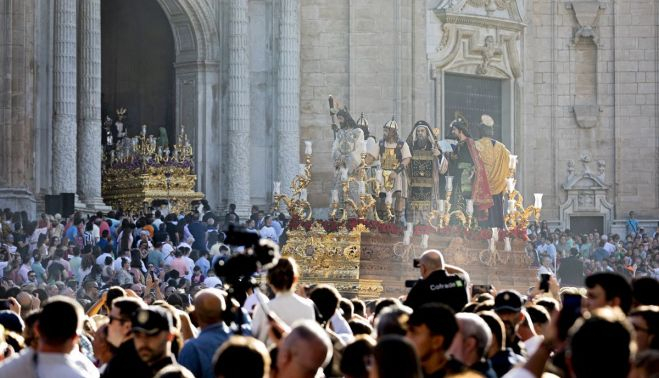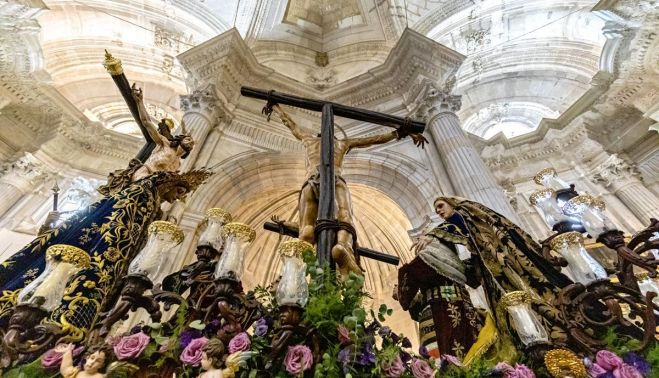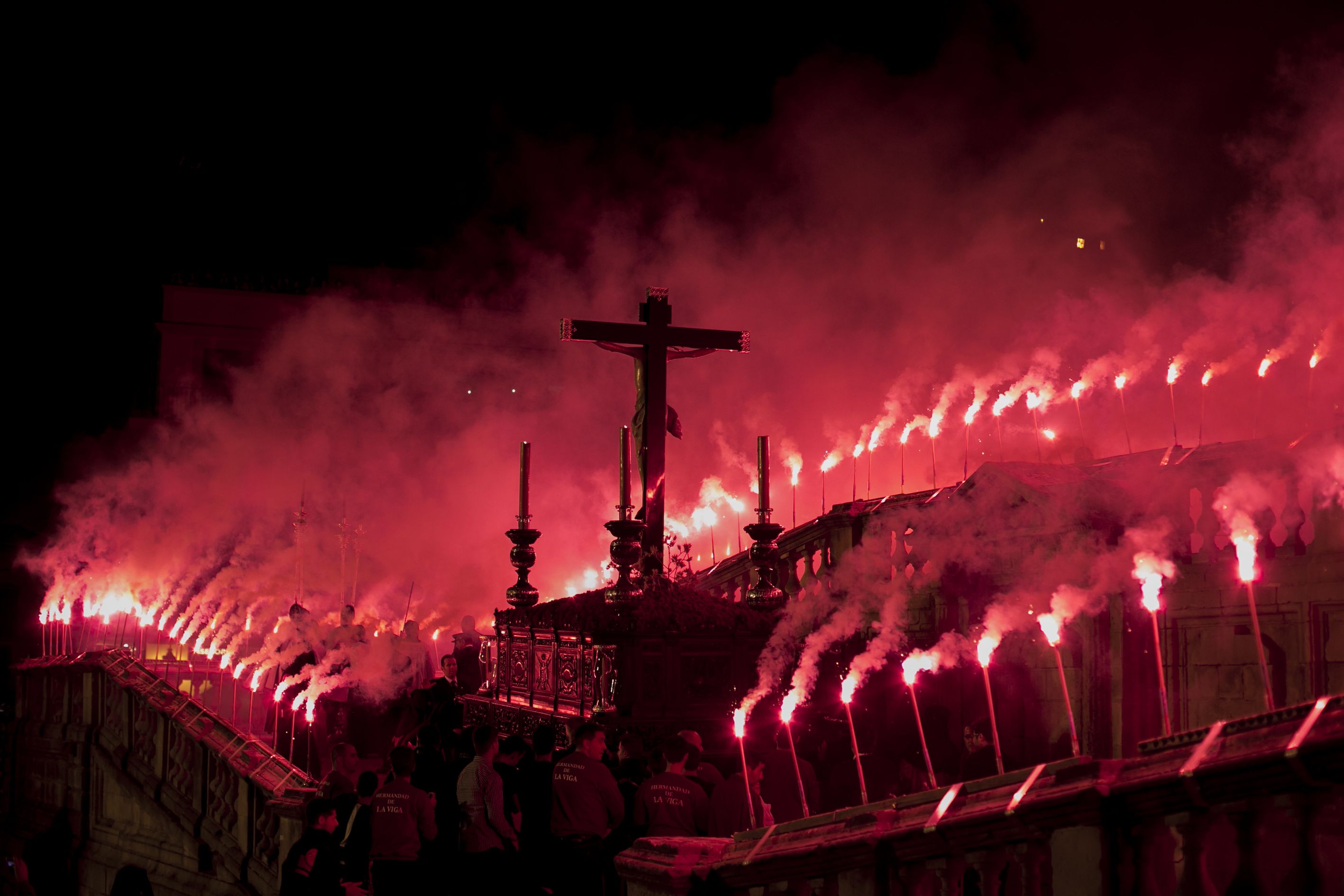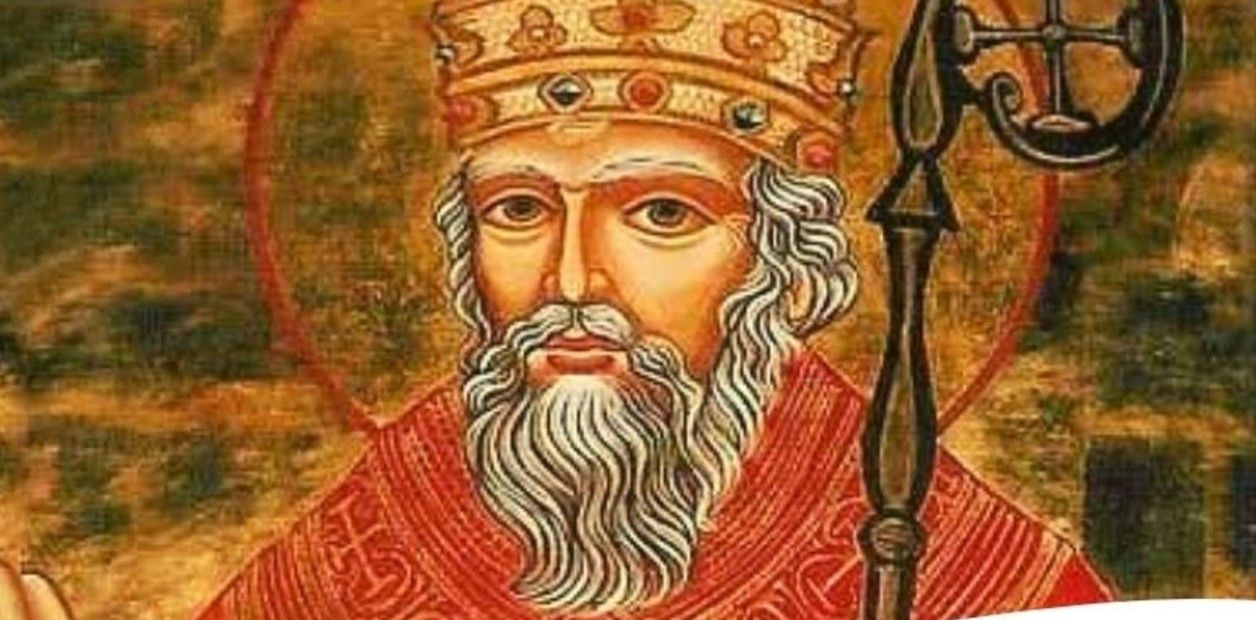La Semana Santa es una celebración que va más allá de lo espiritual, expone las singularidades e incluso algunas curiosas rarezas de poblaciones y ciudades, unas tradiciones que apenas han cambiado desde hace siglos. Mantienen esas exclusivas señas de identidad, ganando, sin embargo, en riqueza artística y popularidad con el paso del tiempo, desde las de los pueblos más pequeños hasta las ciudades donde lo cofradiero reúne a multitudes. Más de 300 hermandades se reparten por la geografía provincial dependientes de dos diócesis: Asidonia-Jerez y Cádiz-Ceuta.
Arcos: ‘armaos’ y la bendición del Nazareno
En Arcos de la Frontera se une la particularidad de su localización geográfica, como puerta de la serranía, junto a un soberbio casco histórico por donde transcurren casi todas las procesiones con hermandades que en gran medida son herederas del intenso pasado histórico de Arcos. Es imposible destacar un momento; tal vez la bendición de Jesús Nazareno al pueblo en la madrugada del Viernes Santo sea el instante más exportado además de conservar costumbres particulares como los ‘armaos’, cuadrillas que visten uniformes de las antiguas legiones romanas, una tradición con tres siglos de ascendencia.
Jerez: la Pasión más multitudinaria y kilométrica
En Jerez, que es la ciudad con más cofradías en las calles en Semana Santa de toda la provincia —45 de Sábado de Pasión a Domingo de Resurrección— se constituye en la que más riqueza artística atesora y la energía de un mundo cofrade en constante crecimiento, destacando asimismo la gran participación en las calles y en las cofradías; su vistosa y amplia Carrera Oficial, el recorrido por las calles del casco antiguo y sobre todo, la saeta, que en Jerez encuentra su más genuina y excelente localización.

Cádiz, la última en ser declarada de Interés Turístico Nacional
Cádiz cierra este triunvirato formado por las semanas santas más reconocidas oficialmente. Es la última en haber alcanzado el rango de Interés Turístico Nacional. De ella es admirable cómo el tiempo no ha sido capaz de romper su estilo. El movimiento cofrade en la ciudad es muy activo e inquieto en cuanto a su crecimiento artístico; también tiene su propia identidad, que defienden a ultranza. Una Semana Santa exclusiva en la que el sonido propio son los pasos caminando al golpe de las horquillas de los maniguetas.
Superando estas tres localizaciones, miramos hacia otras poblaciones cuyas semanas santas la Junta de Andalucía las eleva a Interés Turístico andaluz. Entre ellos, Alcalá del Valle, donde destaca el Domingo de Resurrección. La Borriquita viviente de Alcalá de los Gazules; en Benamahoma, una cencerrada; en Benaocaz, el Viernes Santo, tiene lugar la procesión de la Pasión; en Olvera destacan las procesiones del Silencio, Los Estudiantes, El Cautivo, Jesús Nazareno, Vera-Cruz y Santo Entierro. En San Roque todas las hermandades se recogen en la iglesia Santa María La Coronada. En Tarifa, se sigue con la vieja tradición, aún vigente en zonas del norte y centro de España, los sermones públicos.
The Passion of Jesus, according to Cádiz: art, traditions and centuries-old devotions
Six centuries of a reality that, far from languishing, forms part of the social structure of towns and cities. The Holy Week celebrations in Jerez, Arcos and Cádiz have been declared of National Tourist Interest.
Holy Week is a celebration that goes beyond the spiritual, displaying the peculiarities and even some curious oddities of towns and cities, traditions that have hardly changed over the centuries. They maintain these exclusive signs of identity, gaining, however, in artistic richness and popularity with the passage of time; from those of the smallest villages to those of the cities where the brotherhoods bring together the crowds. More than 300 brotherhoods are spread throughout the province, dependent on two dioceses: Asidonia-Jerez and Cádiz-Ceuta.
Arcos: 'armaos' and the blessing of the Nazarene.
Arcos de la Frontera has the particularity of its geographical location, as the gateway to the mountains, next to a superb historic centre through which almost all the processions take place, with brotherhoods that to a large extent are heirs to Arcos' intense historical past. It is impossible to single out one moment; perhaps the moment Jesus the Nazarene blesses the people in the early hours of Good Friday morning is the most exported moment, as well as preserving particular customs such as the 'armaos', groups that wear the uniforms of the ancient Roman legions, a tradition that dates back more than three centuries.
Jerez: the most multitudinous and very long Passion of Jesus
Jerez is the city with the most brotherhoods on the streets during Holy Week in the whole province, 45 from Holy Saturday to Easter Sunday. It has the greatest artistic wealth and the energy of a world of brotherhoods in constant growth, which is also worthy of mention due to the great participation in the streets and in the brotherhoods. The colourful and extensive Official Procession, the route through the streets of the old quarter and above all, the saeta (sacred song), which in Jerez finds its most genuine and excellent location.

Cádiz, the last one to be declared of National Tourist Interest
Cádiz closes this triumvirate of the most officially recognised Holy Weeks. It is the last to have achieved the status of National Tourist Interest. It is admirable how time has not been able to break its style. The brotherhood movement in Cádiz is very active and restless in terms of artistic growth; it also has its own identity, which it defends to the hilt. An exclusive Holy Week in which there is only the sound made by those carrying the paso (float on which the Virgin is mounted) with the horquillas (support forks) in their hand.
Beyond these three locations, we look at other towns whose Holy Weeks have been elevated to Andalusian Tourist Interest by the Government of Andalusia. Among them, Alcalá del Valle, where Easter Sunday must be particularly mentioned. The living Borriquita of Alcalá de los Gazules (representation of Jesus entering Jerusalem riding on a live donkey); in Benamahoma, with the sound of cowbells; in Benaocaz, on Good Friday, the procession of the Passion of Jesus takes place; in Olvera, the processions of Silencio, Los Estudiantes, El Cautivo, Jesús Nazareno, Vera-Cruz and Santo Entierro are also to be highlighted. In San Roque all the brotherhoods gather in the church of Santa María La Coronada. In Tarifa, the old tradition of public sermons continues, still in force in northern and central Spain.




